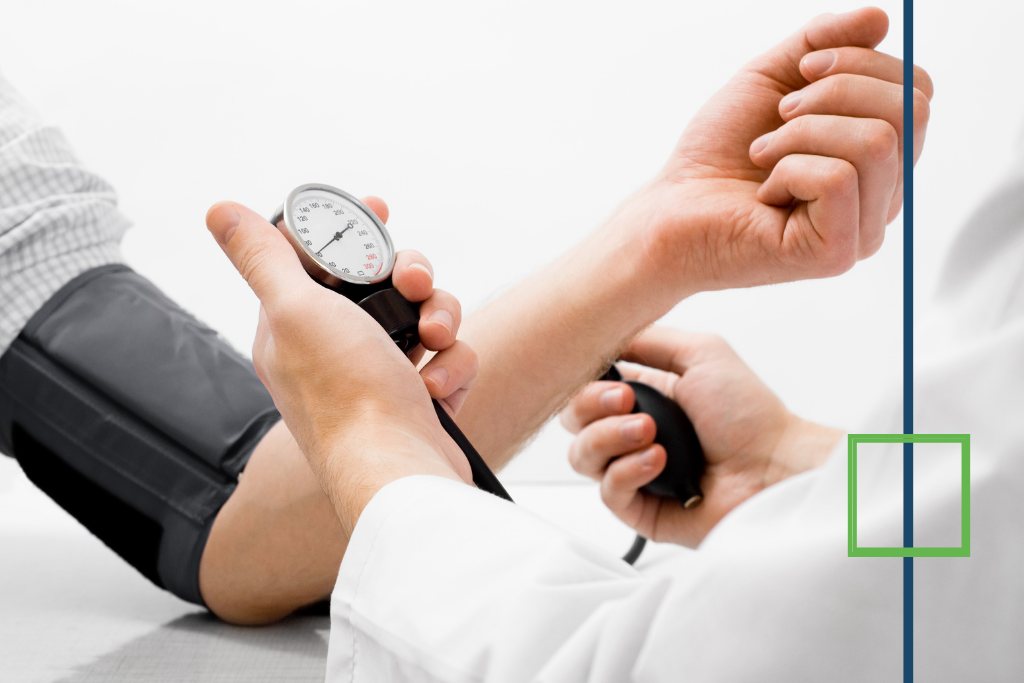What is Rubbing Alcohol?
Rubbing alcohol, or isopropyl alcohol, is widely used in home-cleaning and industrial products. It has powerful antiseptic properties. An antiseptic is a substance that stops or slows down the growth of microorganisms. It is an active ingredient in disinfectants, cosmetics, skin lotions, antifreeze, nail polish removers, body rubs, mouthwashes, and many other products. It is also the primary component in many hand sanitizers. Drinking rubbing alcohol, just 8 ounces, or 240 milliliters, can be deadly— but as little as 20 milliliters mixed with water can make a person sick.
While the word alcohol is in its name, rubbing alcohol is different from the ethyl alcohol contained in most alcoholic beverages. This substance is colorless and bitter-tasting. It is twice as toxic as ethanol and emits an odor that is similar to acetone.
You should never drink rubbing alcohol, use it on children, or use it near open flames. According to the National Center for Biotechnology Information [1] (NCBI), drinking rubbing alcohol is the second most common alcohol ingestion following ethanol but is the most common toxic alcohol ingestion reported to the United States poison control centers each year. In 2009, more than 20,000 cases were reported to the American Association of Poison Control Centers, with more than 80% of these cases being unintentional. Although typically used as an ethanol substitute, accidental exposures have been reported when large amounts of this substance were used transdermally, or children ingested it.


Get Your Life Back
Find Hope & Recovery. Get Safe Comfortable Detox, Addiction Rehab & Mental Health Dual Diagnosis High-Quality Care at the We Level Up Treatment Centers Network.
Hotline (877) 378-4154Isopropyl Alcohol vs Rubbing Alcohol
Rubbing alcohol is a mixture of water isopropyl alcohol. Sometimes, it contains additional ingredients. By contrast, isopropyl alcohol is pure alcohol with no other ingredients. Because this substance contains isopropyl alcohol, the two liquids have similar properties, but they are not the same. For example, both are disinfectants and have antibacterial properties.
However, because it is undiluted, isopropyl alcohol is too hazardous to use as a disinfectant for the skin or home. Companies use isopropyl alcohol in industrial settings to manufacture products while rubbing alcohol is for at-home use.
Isopropyl alcohol is pure alcohol and is a colorless liquid with a musty, sharp odor. There are no other ingredients in a bottle of isopropyl alcohol. By contrast, rubbing alcohol contains isopropyl alcohol, among other ingredients, such as water. Most rubbing alcohol brands contain 70% isopropyl alcohol. Isopropyl alcohol is also not the same substance as ethyl alcohol, which is the type of alcohol in beer, wine, and other alcoholic beverages.
What is Rubbing Alcohol Used for?
Rubbing alcohol is a relatively recent invention, as the term was only fully realized in the 1920s. It was first used as a lining or soaking solution for bandages.
Since that time, rubbing alcohol has become a standard inclusion in most medical kits and hospital environments. It’s capable of thoroughly disinfecting any surfaces in just seconds, so it’s frequently used on open wounds and for surgical instruments.
Despite their similarities, isopropyl alcohol and rubbing alcohol have different uses.
Isopropyl Alcohol
Manufacturers use isopropyl alcohol to make:
- Cosmetics
- Personal care products
- Perfumes
- Antifreeze
- Pharmaceuticals
- Dyes
- Lacquers
- Window cleaners
Get Help. Get Better. Get Your Life Back.
Searching for Accredited Drug & Alcohol Rehab Centers Near You? Or Mental Health Support?
Even if you have failed previously, relapsed, or are in a difficult crisis, we stand ready to support you. Our trusted behavioral health specialists will not give up on you. Call us when you feel ready or want someone to speak to about therapy alternatives to change your life. Even if we cannot assist you, we will lead you wherever you can get support. There is no obligation. Call our hotline today.
FREE Addiction Hotline – Call 24/7Rubbing Alcohol
People typically use rubbing alcohol at home as an antiseptic to clean cuts and scrapes, lowering the risk of infection. It may be part of an at-home first aid kit or medicine cabinet.
If rubbing alcohol contains wintergreen or methyl salicylate, individuals may use it to help relieve muscle aches that are the result of exertion. An additional use involves disinfecting small objects in the home.
What Happens If You Drink Rubbing Alcohol
Drinking rubbing alcohol can quickly lead to alcohol poisoning – even death. Individuals have died after drinking one pint of isopropyl alcohol. The human body absorbs rubbing alcohol very quickly. Approximately 80 percent is absorbed within 30 minutes of ingestion. Because of its chemical makeup, rubbing alcohol does not metabolize in the human body.
People struggling with alcoholism or addiction might see that rubbing alcohol has “alcohol” in its title, know that it’s cheaper than distilled or fermented ethanol, it’s widely available over the counter (and under-the-counter, as many people store it under bathroom or kitchen sinks, particularly when there’s no risk of small children accidentally drinking it), and drinking rubbing alcohol can lead to intoxication. The side effects of rubbing alcohol poisoning are the same as those of a drunk person. However, it’s not even close to being the same alcohol you purchase at liquor stores. This substance is poison. Drinking just a tiny amount can result in life-threatening consequences.
Types of Alcohol
There are three types of alcohol classified by chemists: methyl, isopropyl, and ethyl alcohol. Most types of rubbing alcohol are made from isopropyl alcohol, with concentrations of 68-99 percent alcohol in water. It’s tastes horrible, colorless, smells like fingernail polish remover, and can be found in antifreeze, antiseptic hand sanitizers, paint, household cleaners, thinner, sterilizers, and personal care products To make this substance unpleasant to drink, isopropyl alcohol is mixed with chemicals in a laboratory to give it a bitter taste.
Methyl alcohol, methanol, and wood alcohol—named because it was once produced as a byproduct of the destructive distillation of wood—are all the same type of alcohol. Methyl alcohol is commonly found in paint remover, antifreeze, windshield wiper fluid, copy machines, carburetor fluid, octane boosters, canned fuels for boats or camp stoves, or—very commonly—converted to formaldehyde. It’s strong, flammable, and colorless and can be absorbed through the skin, eyes, lungs, and digestive system. Symptoms of ingesting Methyl alcohol include low blood pressure, difficulty breathing, blurred vision or blindness (formaldehyde can damage optic nerves), fatigue, and damage to the nervous system, stomach, and intestines.
Ethyl alcohol, commonly known as ethanol, drinking alcohol, or grain alcohol, is found in most alcoholic beverages. It’s flammable, colorless, and—when denatured (think: chemicals added to discourage recreational abuse)—can be used as a topical antiseptic or fuel additive. Ethanol is the scientific name for the intoxicating agent produced when sugar is fermented by yeast.
First-class Facilities & Amenities
World-class High-Quality Addiction & Mental Health Rehabilitation Treatment
Rehab Centers TourRenowned Addiction Centers. Serene Private Facilities. Inpatient rehab programs vary.
Addiction Helpline (877) 378-4154Proven recovery success experience, backed by a Team w/ History of:
15+
Years of Unified Experience
100s
5-Star Reviews Across Our Centers
10K
Recovery Success Stories Across Our Network
- Low Patient to Therapist Ratio
- Onsite Medical Detox Center
- Comprehensive Dual-Diagnosis Treatment
- Complimentary Family & Alumni Programs
- Coaching, Recovery & Personal Development Events
Symptoms of Drinking Rubbing Alcohol
Drinking rubbing alcohol can lead to the fast absorption of the substance in the body, leading to quick and toxic effects. Because of the differences in chemical composition, isopropyl is not metabolized as quickly or as efficiently as ethyl alcohol. Through the metabolizing process, the human body breaks down isopropyl alcohol into formate, carbon dioxide, and acetone, a toxic chemical found in nail polish.

Drinking as little as 20 ml (less than an ounce) of rubbing alcohol can lead to evident side effects within 30 to 60 minutes. Larger volumes can be even more harmful and potentially lead to life-threatening consequences. Additional exposure to rubbing alcohol to the skin, eyes, or through excessive inhalation can also cause harmful side effects needing medical attention.
Rubbing alcohol is toxic to drink and can result in moderate to severe side effects. Drinking large amounts can have dangerous consequences, including death. According to the National Toxicology Network, the lethal dose of rubbing alcohol for an adult is 250 ml (8.4 oz).
Reactions to the ingestion of rubbing alcohol can vary for each person. Although small amounts may not have life-threatening results for some, they can still have toxic consequences and cause severe damage to different functions in the body.
Symptoms of Rubbing Alcohol Poisoning
When rubbing alcohol is ingested, it leads to isopropyl alcohol poisoning, The substance is broken down into acetone, the toxic chemical found in nail polish remover. Acetone is a gastrointestinal irritant that can cause the following digestive tract issues:
- Abdominal pain
- Nausea
- Vomiting blood
- Bleeding in the stomach and intestines
- Diarrhea
- Bladder rupture
Acetone also triggers severe depression of the central nervous system. This can result in the following dangerous conditions:
- Dizziness
- Headaches
- Inebriation
- Coma
Rubbing alcohol is very dangerous to consume at any quantity. Massive ingestion is especially risky and can cause depressed cardiovascular function, internal bleeding, organ damage, shock, and even death.
World-class, Accredited, 5-Star Reviewed, Effective Addiction & Mental Health Programs. Complete Behavioral Health Inpatient Rehab, Detox plus Co-occuring Disorders Therapy.
CALL (877) 378-4154End the Addiction Pain. End the Emotional Rollercoaster. Get Your Life Back. Start Drug, Alcohol & Dual Diagnosis Mental Health Treatment Now. Get Free No-obligation Guidance by Substance Abuse Specialists Who Understand Addiction & Mental Health Recovery & Know How to Help.
Treatment for Rubbing Alcohol Poisoning
What do I do if I have isopropyl alcohol poisoning? You should never induce vomiting because this can further damage your esophagus. But there are steps you should take when you or someone you know has alcohol poisoning:
- Drink plenty of water to help your body flush out the toxin. But don’t do this if you have symptoms that make it difficult to swallow, like throat pain or decreased alertness.
- If the chemical is on your skin or eyes, rinse the area with water for 15 minutes.
- Call 911 or go to an emergency room immediately.
The goal of treatment is to remove the alcohol from your body and keep your organs working properly. Treatment for rubbing alcohol poisoning can include:
- Dialysis, which removes ISO and acetone from the blood
- Fluid replacement, which may be used if you’re dehydrated
- Oxygen therapy, which allows your lungs to get rid of rubbing alcohol more quickly

Individuals who have ingested rubbing alcohol may develop a severe central nervous system (brain and spinal cord) depression and breathing trouble that needs aggressive life support measures, including intubation. People with rubbing alcohol poisoning may also need intravenous (IV) fluids to restore fluid loss and balance low blood pressure that results from vomiting. In some circumstances, powerful drugs called vasopressors may need to be administered to stop cardiovascular collapse and death.
People who consume rubbing alcohol or are tempted to drink non-beverage alcohol should consider seeking professional help for alcohol addiction. Through monitored detox and comprehensive alcohol addiction care, you or your loved one can safely break free from the bonds of addiction and begin living a happier and healthier life.
If you’re looking for long-term solutions to staying sober, the alcohol rehab treatment at We Level Up NJ may be able to help. Accredited detox and rehab facilities might actually be the safest place for someone with a substance use disorder right now. Get started at the ideal location during the ideal time to get sober. Contact We Level Up NJ today.
Experience Transformative Recovery at the We Level Up Treatment Center.
See our authentic success stories. Get inspired. Get the help you deserve.



Start a New Life
Begin with a free call to an addiction & behavioral health treatment advisor. Learn more about our dual-diagnosis programs. The We Level Up treatment center network delivers various recovery programs at each treatment facility. Call to learn more.
- Personalized Care
- Caring Accountable Staff
- World-class Amenities
- Licensed & Accredited
- Renowned w/ 5-Star Reviews